Near Facebook headquarters, a fire-prone homeless camp is dismantled, and springs back
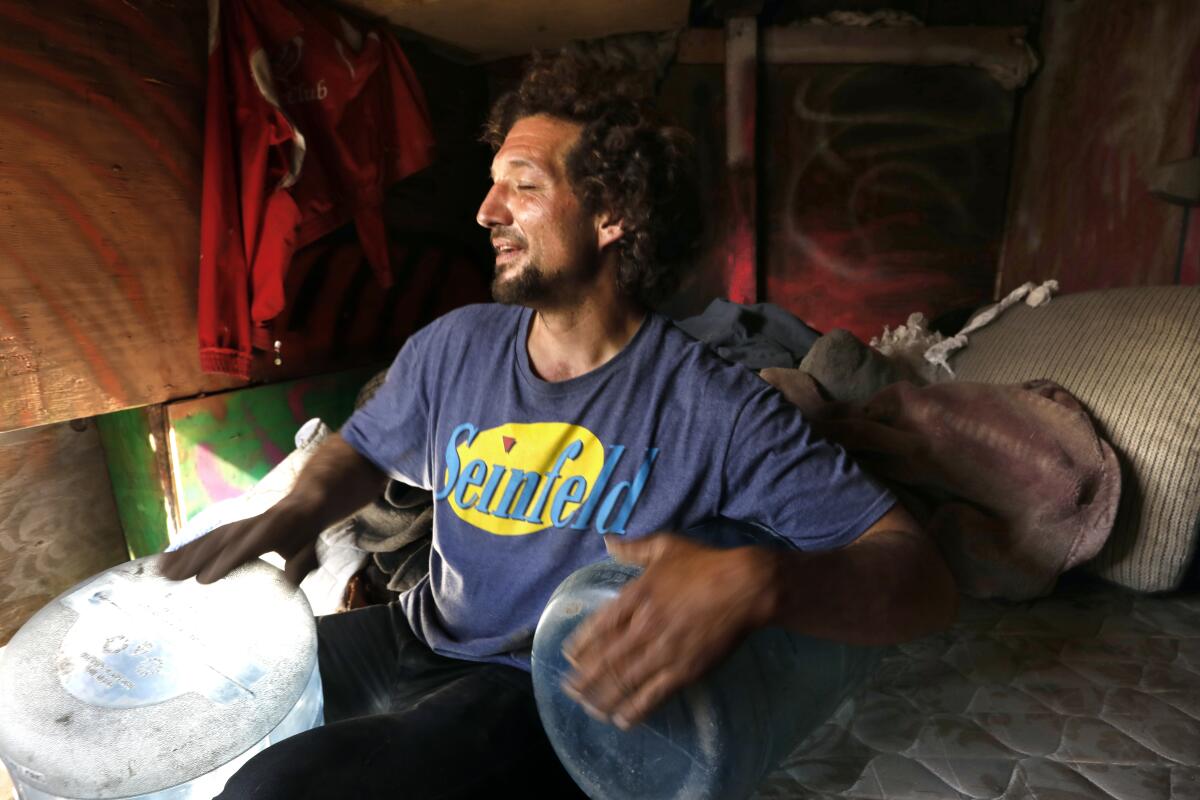
- Share via
MENLO PARK — In the shadow of Facebook’s headquarters, dozens of unsheltered people made their home on a 60-acre plot of grass and marshland they shared with clapper rails, foxes, coyotes and other Silicon Valley wildlife.
The encampment has existed for years, but started swelling in numbers last summer. It included people suddenly unemployed during the pandemic, and others, such as Andy, who said he’d lived there on-and-off for years.
“It’s easier in the summer,” he said, when the biting cold of the San Francisco Bay doesn’t make it so hard to sleep at night, and the rains don’t drench his belongings.
In mid-February, state authorities decided they’d had enough. Although the camp was down to just about 13 occupants from a high of roughly 70, local fire crews reported responding to more than 60 fires and medical emergencies at the wetlands preserve since January of 2020, making it a health hazard.
“It’s not that I don’t have compassion. I do. But the amount of time and risk this site is costing and posing to my firefighters is just not acceptable,” said Harold Schapelhouman, chief of the Menlo Park Fire Protection District, which has jurisdiction over the area. “Somebody had to do something.”
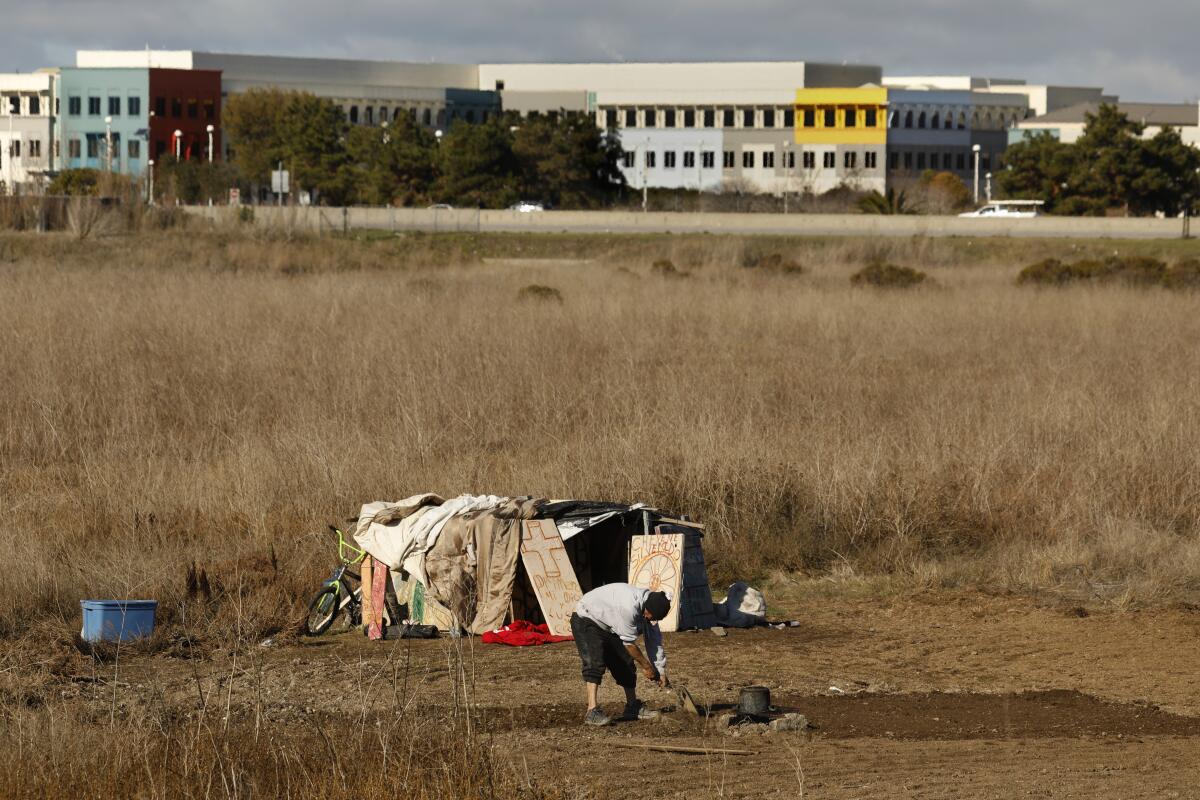
Yet it’s not clear if the campers are ready to abandon their Facebook neighborhood. This week, tents could be seen next to the railroad tracks, with other signs of habitation seen nearby in a sparse tangle of bushes and scrubs.
According to a 2019 report by the Bay Area Council, the region was home to 28,200 homeless people, third nationwide behind only New York City with 76,500 and Los Angeles with 55,200, based on point-in-time counts. Those numbers have likely increased during the pandemic, including in Silicon Valley, where Santa Clara County reported 9,706 homeless people in 2019, and San Mateo County reported 1,512.
In Silicon Valley, the unsheltered stand out in this affluent employment hub, living among grassy valleys and roadsides dotted with tents and detritus. Sometimes these tents appear on the edges of city parks, inches from multimillion-dollar homes.
“I know it sounds dramatic, but the scale feels like something out of the Great Depression or Dust Bowl,” said Heather Freinkel, an attorney for the Oakland-based Homeless Action Center — an organization that helps find and secure resources for unsheltered folks in the East Bay. “It’s really not OK.”
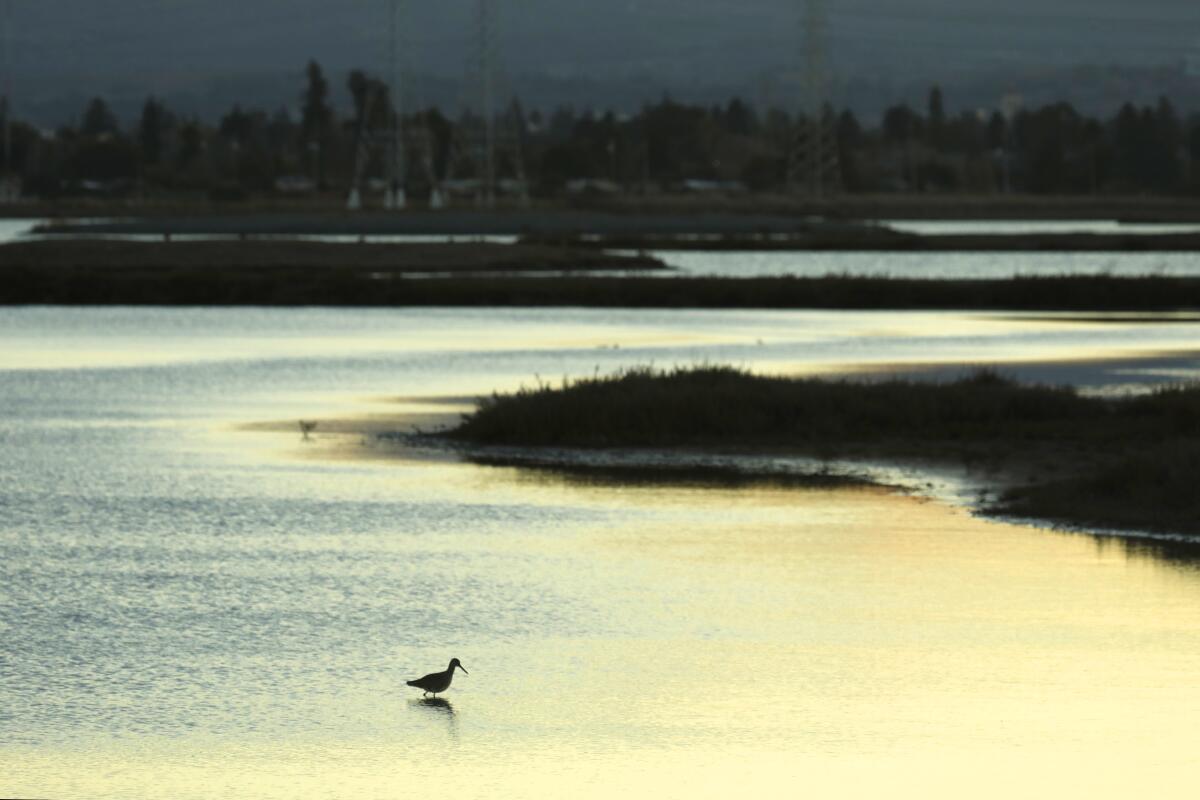
Near the Bay in Menlo Park, the 250-acre Facebook campus includes more than 80 buildings, which — prior to the pandemic — provided workspace for more than a quarter of the company’s 45,000 employees. It’s a partly fenced, self-contained tech town, with two buildings designed by Frank Gehry. Employees navigate the campus with the help of the company’s signature baby blue bikes.
Last year, Facebook made no public comments about the homeless encampment growing at its doorstep, but in December it announced it was investing $150 million to build housing and reduce homelessness for the Bay Area’s lowest-income residents, part of a $1-billion overall affordable housing pledge in the region.
The company “care[s] deeply about helping neighbors find a safe and affordable place to live,” Chloe Meyere, a spokeswoman for the social media giant, said recently. She added that Facebook was not involved in the local decision to dismantle the neighboring encampment, where some of the blue bikes could be seen dismantled in piles among the tall grasses.
During the past year, as numbers in the camp swelled, infrastructure within the camp became increasingly intricate and complicated. Camp occupants dug four-feet deep latrines in the ground, erected solar panels around their structures, constructed chimneys into their shelters, and kept dogs that alerted them to strangers and visitors.
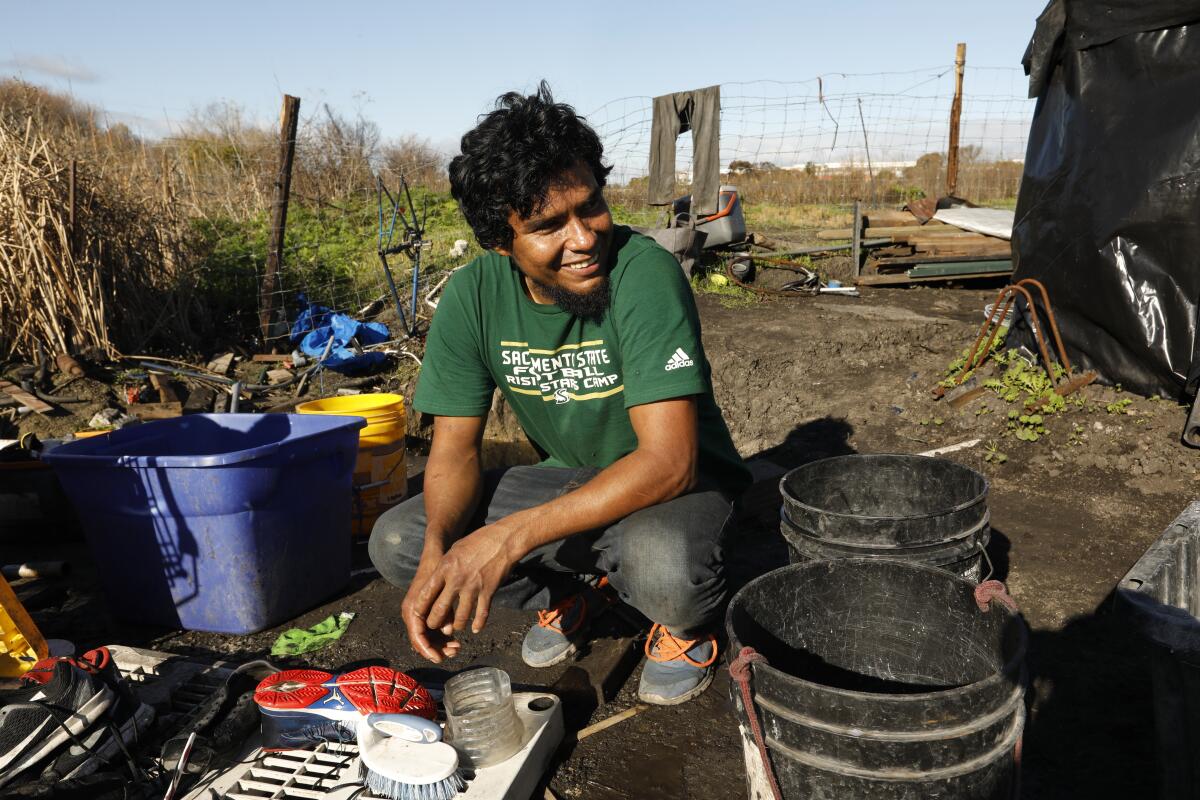
None of the homeless people interviewed said Facebook had anything to do with why they set up camp nearby.
Alex, 35, ended up here after having lost his job as a Palo Alto cook. An immigrant from El Salvador, he lived near the railroad tracks, toward the eastern side of the preserve with his dog and, until recently, his girlfriend. Others, including similarly aged men, named J.J., David Gearhart and Sergio Lopez said they’d lived in the area for years, preferring to live outdoors and without authority figures watching.
During the summer, one man — who declined to provide his name — told a visitor that he foraged for tubers and young plants in the marsh and occasionally hunted ground squirrels.
Gearhart and others recalled a white fox they’d seen multiple times.
“I saw it at night, it looked almost as though it were glowing,” he said.
Not far away from the other encampments, near a fenced off Caltrans pumphouse, Ricky Ricardo Alberto Cortez, 36, was seen carrying a machete. He said he cut grass along the fence and path to assist homeless people who live in the encampment.
“I come and check on them,” said Cortez, later seen entering a cargo container containing a mattress, utensils, clothing and several lights.
As the camp grew increasingly developed, the fires and emergency calls became too much for the Menlo Park fire chief. He described a summer for his crews of breathing in burned poison oak, twisting ankles in booby traps, and nearly falling into some of the deep, open latrines.
But in exploring options, Schapelhouman found himself in a jurisdictional quagmire.
The encampment was in an area called the Ravenswood Triangle, so named because of bisecting roads and a railroad.
Caltrans has a role in monitoring and cleaning the area. PG&E has a presence, too. So does San Mateo County’s transportation agency.
And because it sits within the city limits of Menlo Park, the city is also responsible for the safety and day-to-day monitoring of the area.
As Schapelhouman tried to get state and local officials to help, each party, he said, deflected questions and responsibility to others. Some declined to act, citing CDC guidelines that discourage clearing or moving encampments during the pandemic.
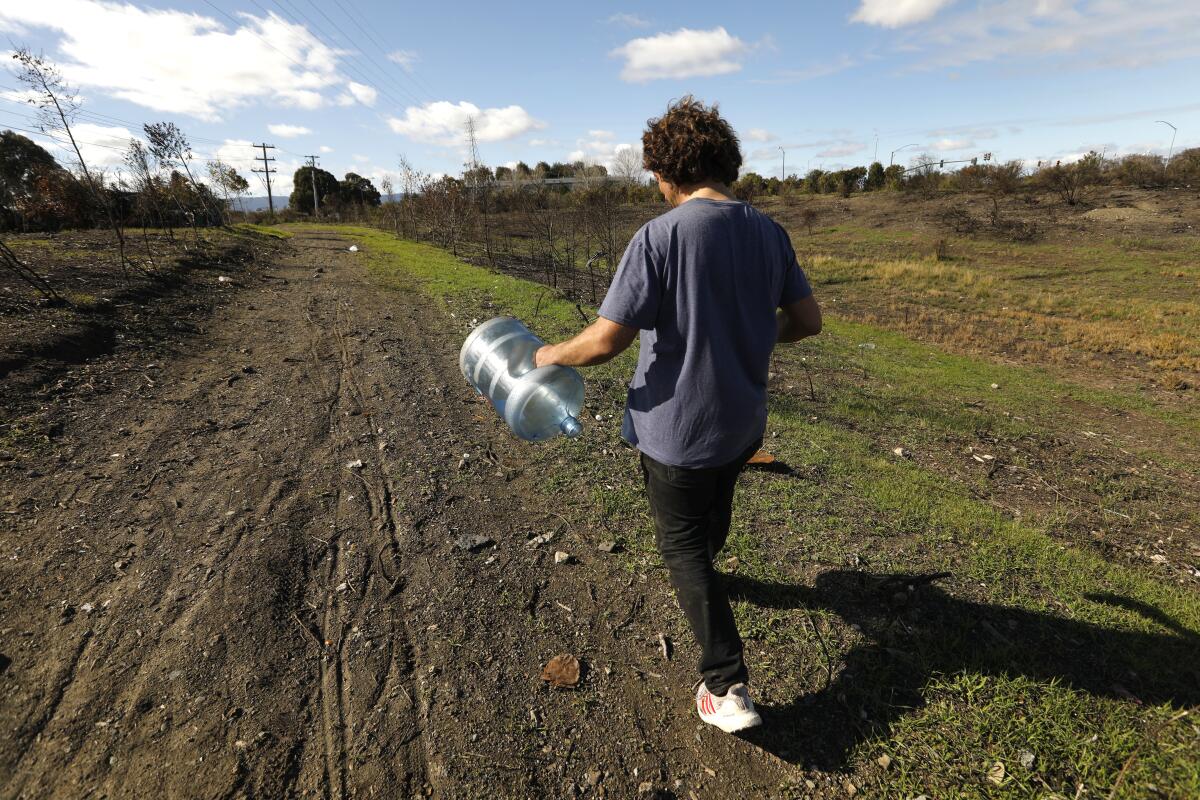
“You wouldn’t believe the mess — no one knew what anybody else was doing,” he said.
He said the few homeless organizations that were addressing the Ravenswood population were unaware of one another’s outreach — often duplicating services such as hot meals and showers.
Representatives from LifeMoves, an organization that provides services and does community outreach to the homeless population, were seen at the camp but would not speak on the record.
Alicia Garcia, associate director for WeHope — a homeless outreach center on the peninsula — said they’d worked diligently with the residents, warning them prior to the sweep and helping them find family and temporary shelter. Garcia said she was able to find accommodations for nine of the 13 residents. The other four refused.
She said most people who live there are looking for a way out — illness and subsequent joblessness are main drivers of local homelessness, along with mental illness and substance abuse.
“It’s a crisis,” she said, adding she’s never seen as many homeless people in the area as this past year.
In mid-February, a crew of Caltrans contractors arrived with three 50-yard dumpsters and dismantled the tents and structures, removed the residents’ belongings and filled in the holes that dotted the landscape.
A Caltrans spokesman, Alejandro Lopez, said the sweep was consistent with CDC guidelines, which allow for cleanups “if there is an immediate safety concern or a threat to critical infrastructure.”
He said nobody was forcibly removed and that any items considered of value were tagged and placed in storage, where they’ll be held for 90 days.
By Monday of this week, an encampment had been partially rebuilt. While talking with a reporter on the phone, the fire chief saw two men walking through the marsh holding their belongings.
A few days later, even more people had returned.
As Garcia from WeHope noted, sweeping them out doesn’t seem to work: It’s often harmful to those who live there, the financial costs are high, and people end up coming right back, anyway.
What’s needed, she said, is more housing options — solutions that will allow people to live in dignity.
The situation has some wondering about the overall government response to the seemingly growing number of displaced people living in the world’s innovation capital — and the seeming lack of solutions.
“It’s frustrating,” said Menlo Park’s deputy fire chief, Jon Johnson. “Nobody seems to be able to figure out how to fix this problem, yet. Aren’t these supposed to be the smartest people in the world?”
More to Read
Sign up for Essential California
The most important California stories and recommendations in your inbox every morning.
You may occasionally receive promotional content from the Los Angeles Times.














